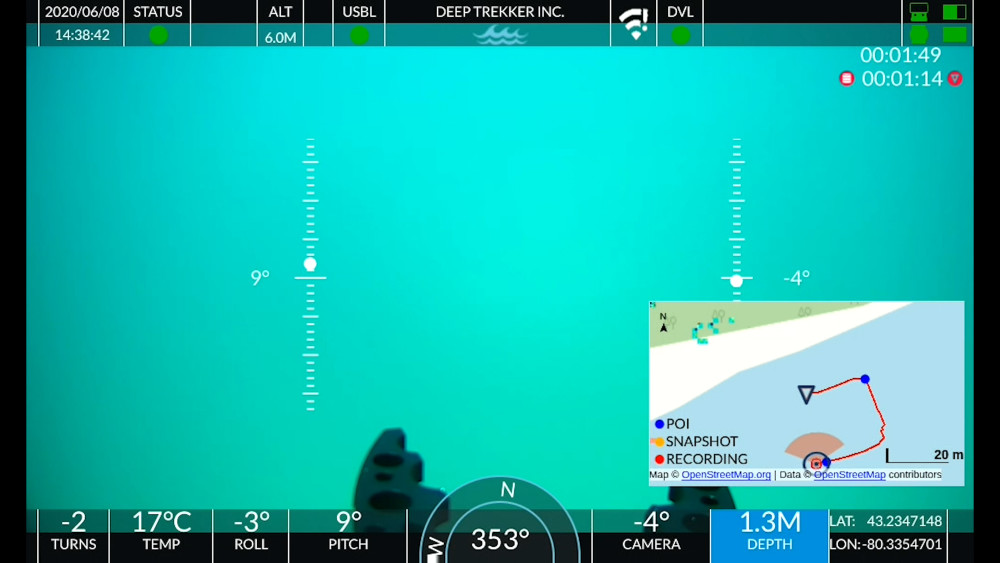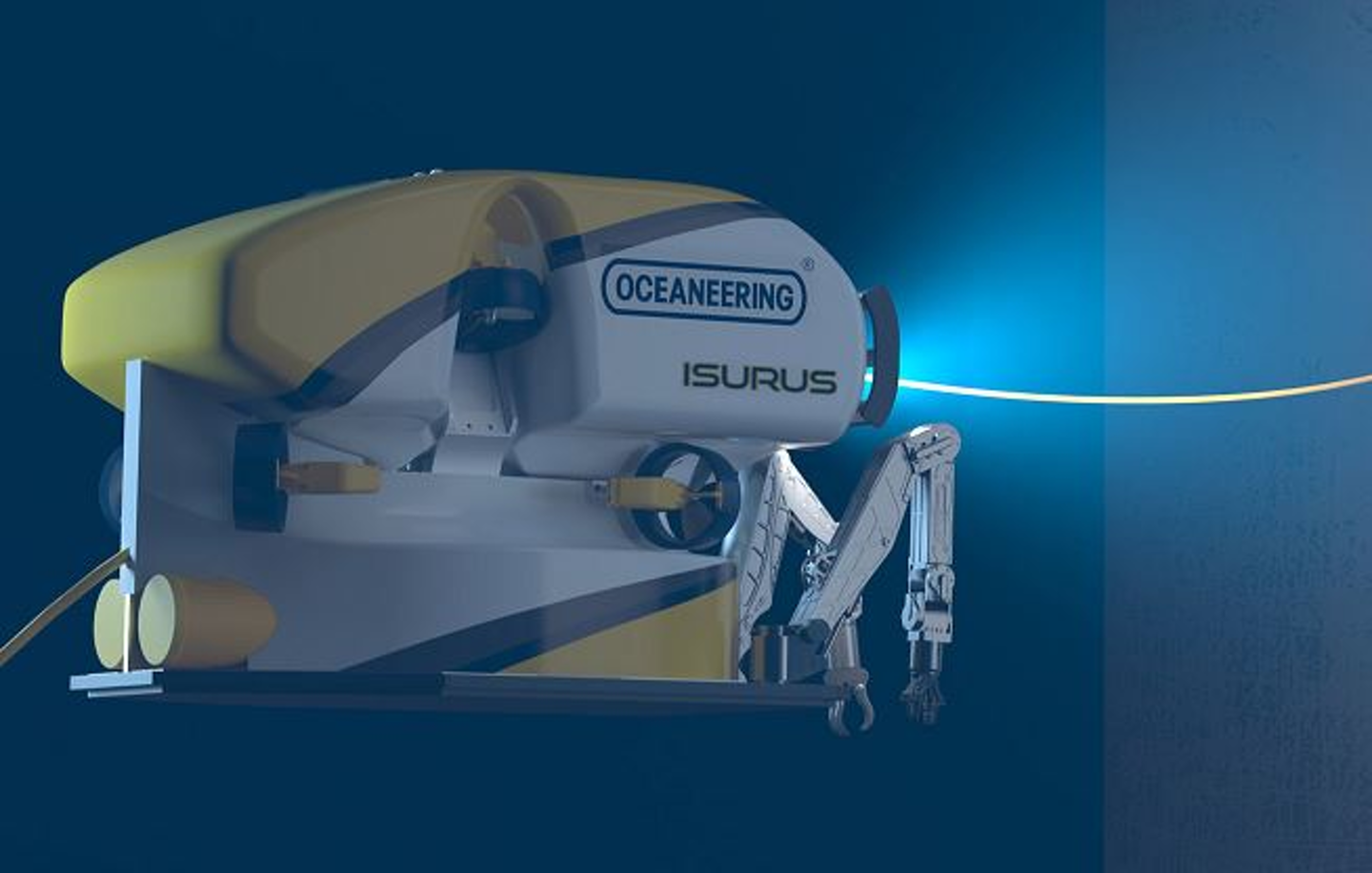Home › Forums › ROV › ROV Technical Discussions › Measuring CM with sonar?
- This topic has 32 replies, 10 voices, and was last updated 13 years, 11 months ago by
Savante.
-
AuthorPosts
-
May 22, 2010 at 5:50 pm #3538
Isak
ParticipantHi
We have an Ocens Modules V8 and are planing an job where we are suppose to measure anodes.
The anodes are from 2m to 3m in length and 10-17cm in width.
Is it possible to measure the anodes, and how much is used with the sonar?
Maby not with the one on ower ROV, but with an more expensive one?Dont remember witch one we had on the ROV to day.
Sorry fore my bad English.
May 22, 2010 at 7:17 pm #27971James McLauchlan
ParticipantIsak
I’m fairly sure the client would not accept estimated anode depreciation using any kind of sonar. Ask them!
At a minimum they would expect visual commentary and logged data.
May 22, 2010 at 7:43 pm #27972Isak
ParticipantHi
Yes Im thinking the same, about that.
Was only wondering if there is any way to do that with an sonar.Since we have an weary small ROV, it isn’t many ways to measure 3m with cm precision.
We are only brainstorming now about options, we can try to make the measurement.
And sonar was one idea..The V8 only have an manipulator with an claw, that can grip and nothing more.
So it’s hard to come up with an idea that will work.May 22, 2010 at 8:35 pm #27973Savante
Participanthttp://www.savante.co.uk/2011/02/lumeneye-underwater-laser-module/
http://www.savante.co.uk/2011/10/aquantum-underwater-subsea-rov-laser-module/
Your profiling project is not difficult – example on the sheet was a scratch less than 0.7mm thick.
I got 3 units available on the shelf for length, breadth and width measurements (3m not a problem).
May 22, 2010 at 11:53 pm #27974Craig Thorngren
ParticipantIsak,
BlueView Technologies Multi-Beam sonar can give you accurate measurements down to the 1/10th of an inch.
Also, it may seem kind of strange, but if you have the visibility, why not use a tape measurer??? I know it sounds kind of strange, and two weeks ago I would have agreed, but I recently saw a team use a tape measurer to get reading down to a fraction of an inch. They prefered to use Imperial rather than metric readings because it was easier to read with the camera.
Good Luck,
ChiefMay 23, 2010 at 3:20 am #27975Joel
ParticipantSometimes a visual is not enough. I have been on a project where the anode looked almost perfectly intact with only 5 or so % wastage. When we touched it with the arm a square crust fell off and exposed nothing but the rod thaqt was originally securing the anode to the tree. Damndest thing.
May 23, 2010 at 5:17 am #27976Isak
ParticipantHi and thx fore all replays.
The Savante laser looks interesting anymore info, like video of it in use?
Chief: My first plan was an magnetic measurement rod, but becaus of marine growth I think it’s impossible to connect it to the steal?
And since the ROV only have one claw it’s hard to connect anything else…Se video of the rov in action and you will see its limits.
May 23, 2010 at 7:21 am #27977Savante
Participantget in touch direct isak -our contact details are on http://www.savante.co.uk or you can email direct at grant.thomson@savante.co.uk
May 23, 2010 at 7:59 am #27978Isak
ParticipantOk thx.
But what is the best solution, laser ore blueview sonar?
I think after what I read that the blueview is the purchase that we could have most use fore in later jobs.
If sonar ore laser is the way to go.
May 23, 2010 at 11:59 am #27979HelpMaBoab
ParticipantLaser is the most accurate, as for the Blueview sonar, it is ok but very heavy, especially if you put it on a pan&tilt (it will wreck the Sub Atlantic units)
An option is the Tritech Gemini Sonar, it is about 1/4 the weight / size and has better graphics, and what appears to be better resolution.Having used both units in poor visibility the Gemini wins hands down.
May 23, 2010 at 1:13 pm #27980Craig Thorngren
ParticipantLaser is the most accurate, as for the Blueview sonar, it is ok but very heavy, especially if you put it on a pan&tilt (it will wreck the Sub Atlantic units)
An option is the Tritech Gemini Sonar, it is about 1/4 the weight / size and has better graphics, and what appears to be better resolution.Having used both units in poor visibility the Gemini wins hands down.
Boab,
You are completely wrong about the Gemini… It’s almost 4 times as heavy, it hasn’t been integrted onto an Ocean Modules VIII (the BlueView has been integrated on quite a few of them).
Graphics/resolution??? BlueView’s 900khz and the Gemini is 700khz. 900khz makes much better pictures than 700khz… Don’t get me wrong, the Gemini is a good sonar, but it is a power hungry and heavier unit. The software also leaves a lot to be desired.
Chief
May 23, 2010 at 1:54 pm #27981Isak
ParticipantHi.
How abut this one?
seems like an unit?
http://www.blueview.com/MB1350.html
Video: http://www.youtube.com/watch?v=0OdGRUs-kw8I se they are doing some measurement in the video in meters, so i dont know if it would do cm.
I also see the wight is 12.2lb in air and it says -3.2 in water?
Would guess that is an typo and it’s suppose to be 3.2 in water?But if an sonar is to heavy, why not ad some buoyancy to it, so it would get lighter in water?
I dont need any pan tilt, since the rov goes 360d degrees.
May 23, 2010 at 2:56 pm #27982James McLauchlan
ParticipantI refer to what I mentioned earler. Ask them!
Rather than investigate various types of options see what the client expects and work from there.
May 24, 2010 at 7:16 am #27983HelpMaBoab
ParticipantChief,
Used both units back to back, The Blueview was the 4000m version, hence the additional weight. All of us who operated both units preferred the Gemini for a number of reasons. Size / Weight, it was easier to use / Install, the returns / resolution were basically identical but the display pallete for the
Gemini was superior as was the 120deg / 120m scanning range (160deg out soon).
Also there is a large price difference between the units (Gemini less expensive).NB We had the Gemini for around 3 months and we still have the Blueview fitted since last Dec.(Both units working in poor-zero visibility operations).
So I reckon we really did have a like for like comparison.I was also at a Blueview demonstration in Aberdeen, and was basically underwhelmed by the products on show.
Bottom line is: The Gemini is less expensive (especially as the high USD exch rate) and, most importantly the operators preferred the Gemini,
No brainer really
CheersMay 24, 2010 at 8:22 am #27984Andy Shiers
ParticipantForgive me for butting in on this conversation but……………………………. Why do you wish to measure the anode 😕
It’s either active and working or it is not !
Some clients wish to know the depletion percentage so that they can estimate how long before they need to fit new ones or for future platform manufacturing. But it is no great deal it’s for anaylasis only ! 😯 This is also why Cathodic readings are taken by diver or ROV.
There is another alternative though 😀 You could always get the exact measurement from the Fabrication drawing 😀
It seems to me that someone don’t know what they are doing and thinking up ways to make a contract ! 8) Or it’s lump sum and he/she just wants to put a spanner in the works ! 😯 -
AuthorPosts
- You must be logged in to reply to this topic.



